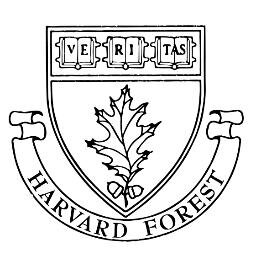Dataset Overview
In the past 20 years, moose have spread south from Vermont and New Hampshire and recolonized their pre-historical range limit in southern New England from which they had been extirpated almost 200 years earlier. Intensive moose browsing in the boreal forest has caused declines in forest density and shifts in species composition in some areas, generating considerable interest and concern among foresters, wildlife managers, and ecologists as to how moose, along with white-tailed deer, will impact forest development in this region. Harvard Forest, in collaboration with researchers at the USGS Massachusetts Cooperative Research Unit, initiated a long-term study of the role of moose and deer in SNE forests using experimental enclosures: full enclosure, partial enclosure, and a control plot.
- Purpose
The goal of this project is to quantify forest composition and structure in harvested areas (1) exposed to moose and deer browsing,(2) protected from moose and deer browsing, and (3) exposed to deer browsing but protected from moose browsing.
- Data Collection Status
-
Data collection for this dataset is ongoing
- Start date
2008-01-01
- Data Availability
-
This dataset is available to download from another website
- Data License
Linked - Third party determines data license
- Preferred Citation
Faison E, DeStefano S, Foster D. 2017. Role of Moose and Deer Browsing in Harvested Forests of Southern New England since 2008. Harvard Forest Data Archive: HF174. Available at: http://harvardforest.fas.harvard.edu:8080/exist/apps/datasets/showData.html?id=hf174
- Update Frequency
Unknown
- Maintenance Plan
Not provided
- Links
-
- Moose and Deer Browsing in SNE Harvested Forests since 2008
- Harvard Forest
- Related Datasets
- Determining Dataset Similarity

